Book your visit
We devote great care and attention to detail throughout our work in the vineyard. For us, it is nothing less than a continuous quest for harmony and an effort to instill vitality in everything we do. In the same spirit, our winery has been designed to extend this journey

The harvest is undoubtedly the most exciting time of the year – the moment when everything comes together. With vineyards on two different slopes of Montalcino, our harvest follows a natural progression, beginning in the east and concluding in the west. We depend a lot on tasting the grapes, as flavor is a priority and it must be fully developed. In recent years, we have been starting the harvest earlier and earlier, sometimes as early as the first days of September. We hand-pick the grapes following the biodynamic calendar, placing them in 15kg crates and transporting them to Castelnuovo dell’Abate (where the wine cellar of Podere le Ripi is located) for meticulous manual selection. Typically, we process the grapes harvested in the morning right away, while those picked in the afternoon are cooled for 10-12 hours in a refrigerated room. This ensures they enter the fermentation tanks at a temperature no higher than 15°C, preventing overly vigorous fermentations.

All our wines undergo slow fermentation processes, sometimes lasting months or even years. Fermentation takes place in large, half-cone-shaped Vosges oak vats. Once the vat is filled, we begin open pump-overs, from two to four times a day, depending on how fermentation is progressing. Our cellar acts as a small microbiological incubator, where spontaneous fermentation has always occurred. As a result, it is home to a diverse community of yeasts that cyclically carry out 95–98% of the fermentation in the initial months, sometimes working in parallel with malolactic fermentation, which in recent years has become increasingly impatient.
If fermentation slows significantly and the yeast enters a dormant phase, we stop aeration and tend to fill and seal the vat with the skins inside, a method similar to the submerged cap or “Piemontesina” technique. The following spring, the wines always experience a fermentation reawakening, stimulated by the change of seasons. This secondary fermentation can last years, gradually consuming the last residual sugars. Nothing is added to the wine except for small amounts of sulfites, which we are working to minimize to the absolute necessary level for each wine.
Sangiovese is not an easy variety; it does not adapt well to rigid protocols. This is why we must make adjustments each year, adapting to the vintage. We strongly believe in taking a step back, allowing nature to express itself fully. Our role is to accompany the process, not to dominate or manipulate it. We trust our vineyards and the work we do in the field. The wine is not entrusted to consultants but to people who have lived and worked at the estate for years. We take a few more risks, and sometimes things don’t go as planned—but more often than not, they turn out far better than we could have orchestrated. Nature finds its own way, and our goal is simply to let the soul of this land shine through in every bottle.
Once racked, all our wines begin their maturation in large oak casks. There are no fixed rules here—each vintage is carefully interpreted in order to minimize unnecessary interventions. Some vintages need to breathe in the cask for extended periods, up to 40 months, while others, especially warmer years, evolve quickly and require different approaches after just 24–26 months in wood.
Our goal is to disturb the wine as little as possible, avoiding unnecessary rackings and limiting interference. The wine naturally goes through phases of reduction or secondary fermentation, but we welcome these changes—they help preserve the energy and vibrancy that will make a difference after five years of aging.
When the wine has completed its interaction with the wood, we transfer it to large concrete vats, which we consider the best intermediary between cask and bottle. Here, the wine can rest and naturally settle for an additional 12–24 months.
Once we determine that the wine is ready, all that remains is to wait for the right lunar phase and bottle it with one final, minimal addition of sulfites.

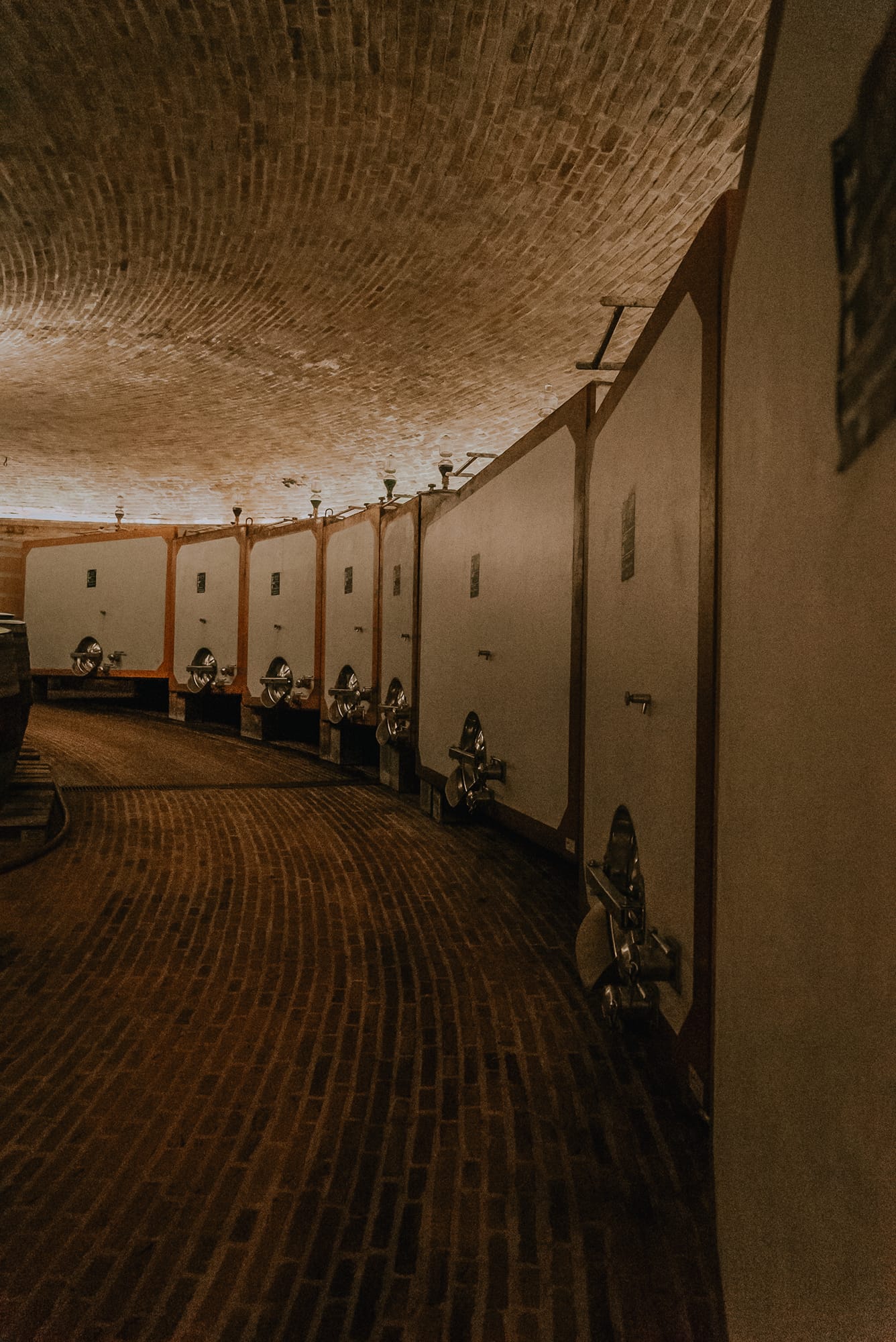
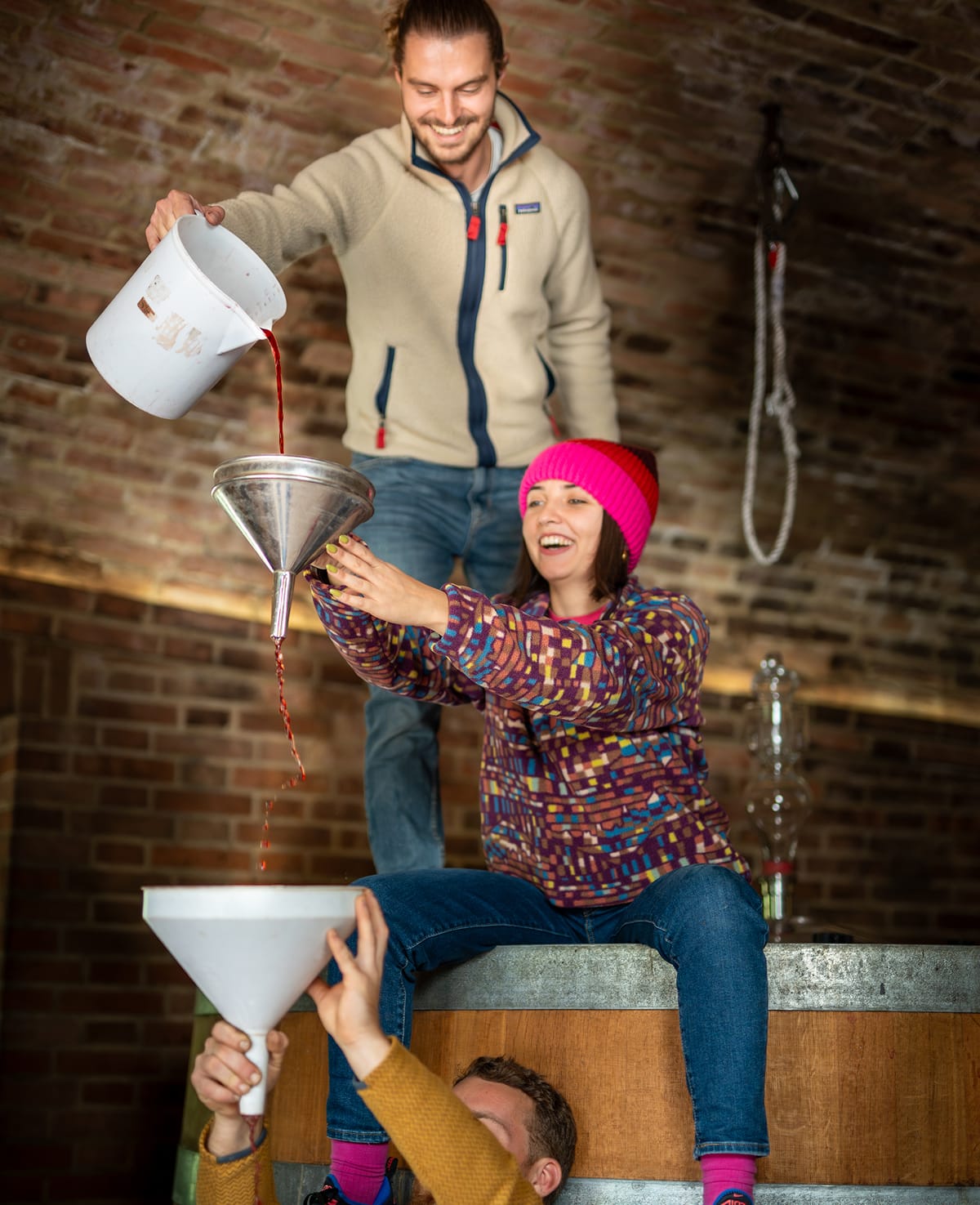
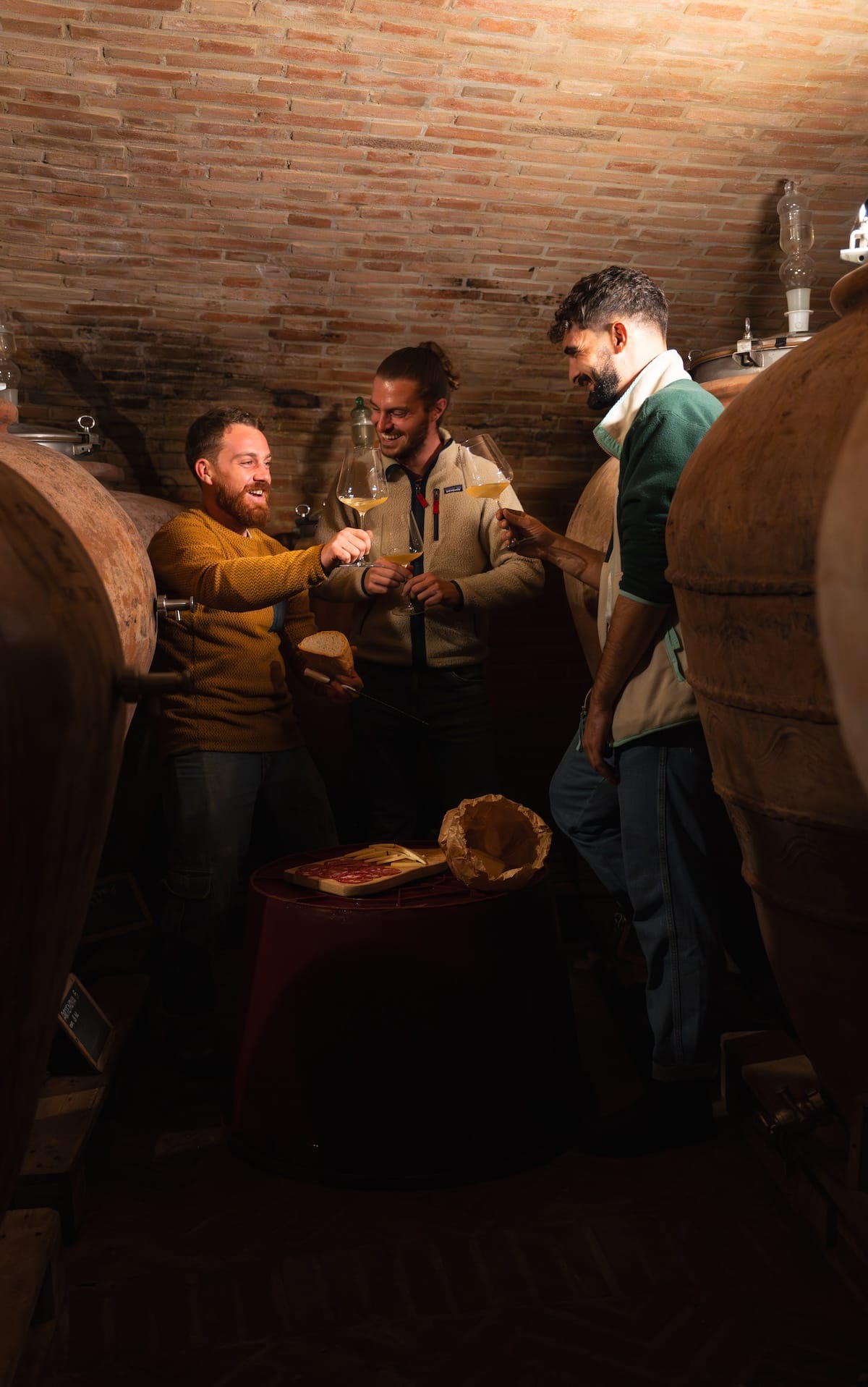
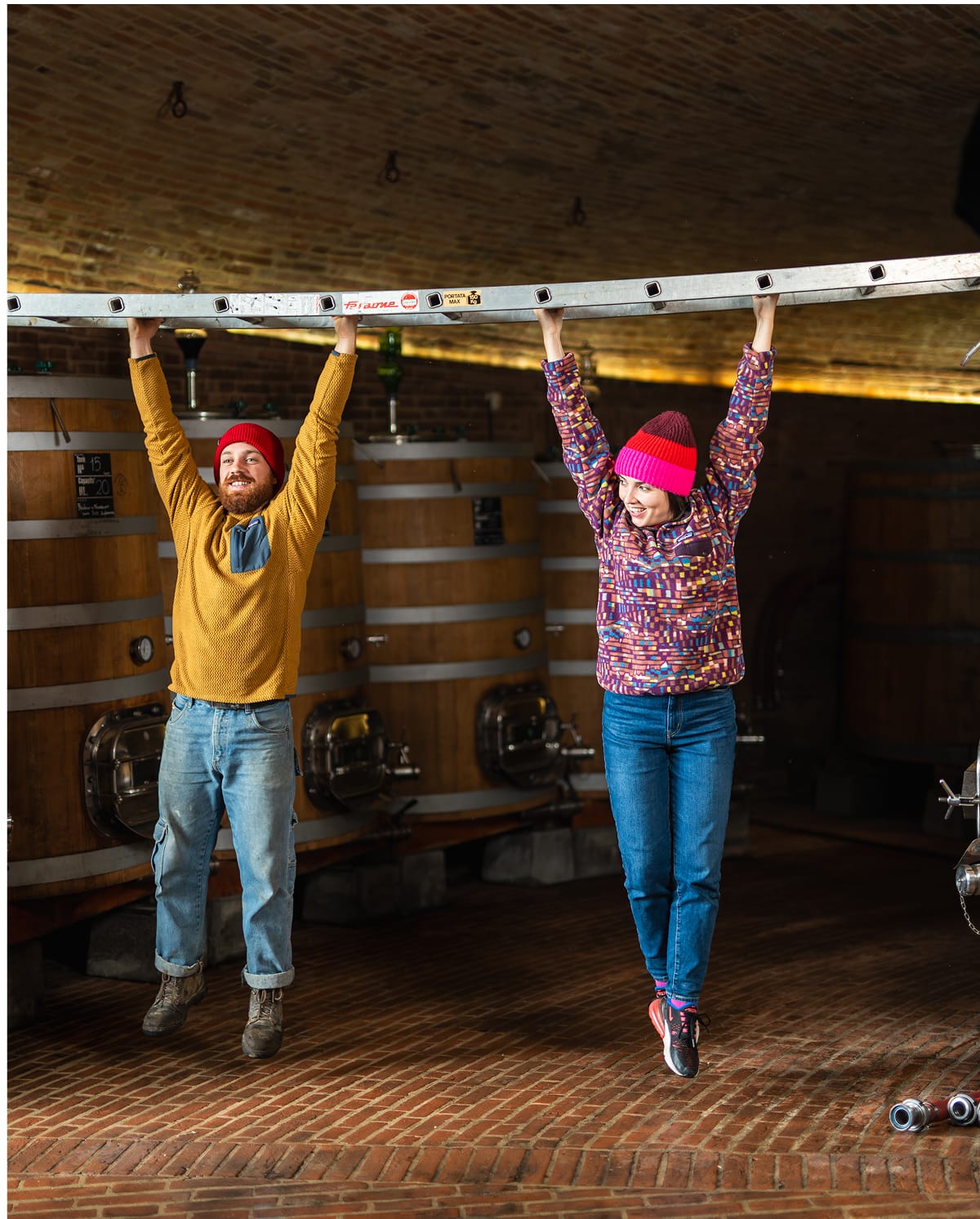


1:1.618033—this is the so-called magical ratio, used in architecture since at least 1500 B.C., when Stonehenge was built.
The golden ratio is also deeply embedded in nature, shaping DNA helices, the spirals of certain galaxies, and the arrangement of floral organs in some plants—a divine number that we believe embodies harmony.
We consciously avoided creating an artificial magnetic field different from that of the surrounding land. By removing 90% of the reinforced concrete structure, we prevented the formation of a Faraday cage, which would have disrupted the natural flow of energy due to the continuous electrical conductivity of iron reinforcements.


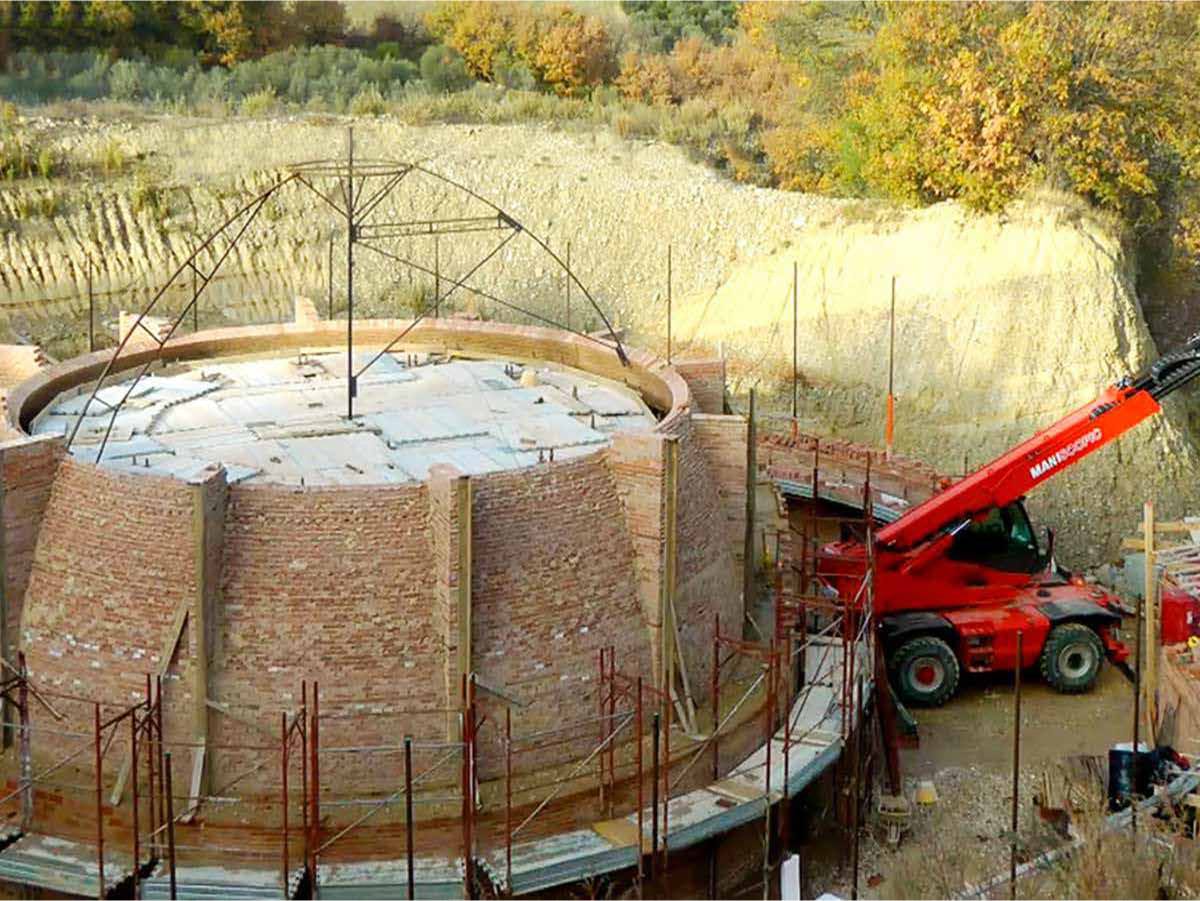
The Pantheon
Additionally, eliminating large concrete pours allowed us to create a building that breathes, embracing the rhythm of the earth. We asked ourselves: what would the wine prefer? To rest inside a modern structure made of reinforced concrete, or to be welcomed into a small temple built with porous materials—an incubator of life, surrounded by shapes designed to preserve harmony and energy.
From the moment we began envisioning our cellar to its inauguration in 2015, twelve years passed. It was worth the journey!